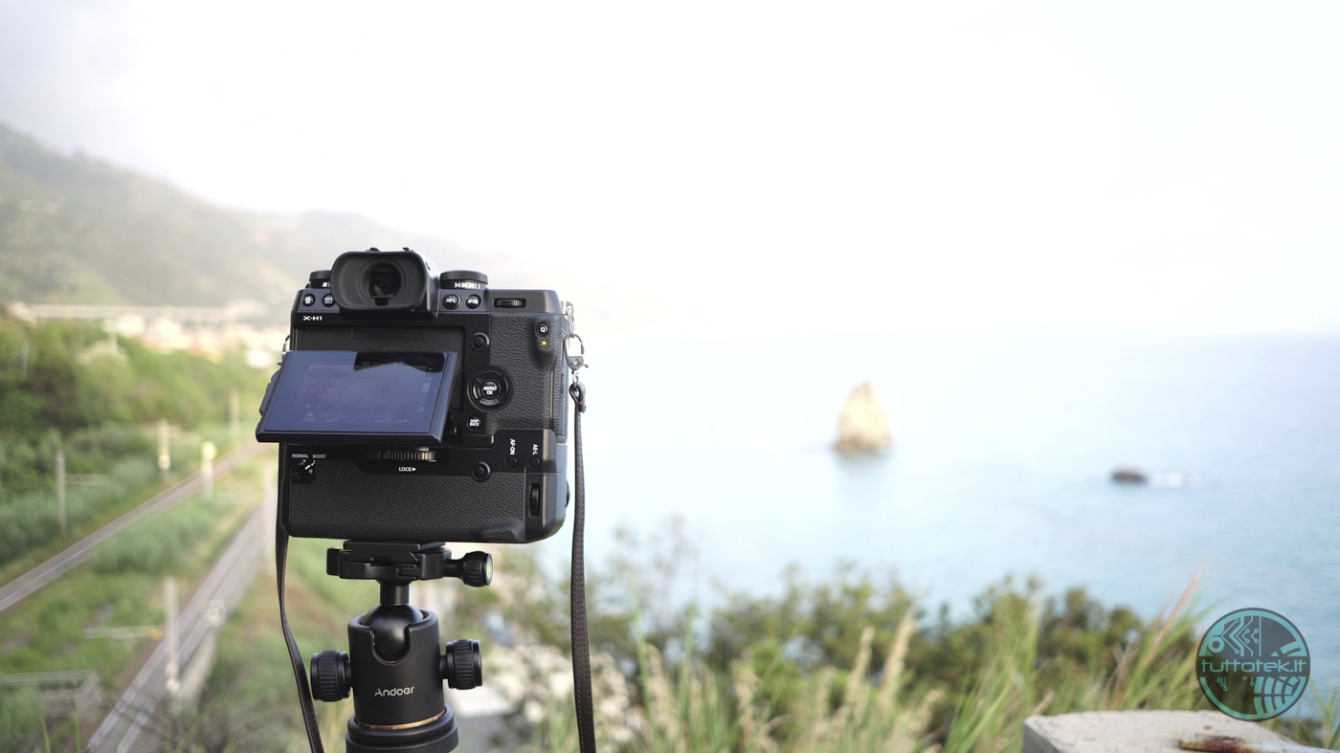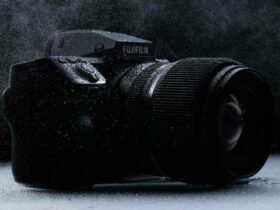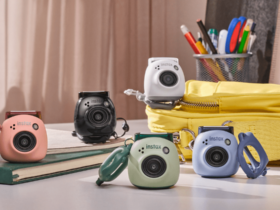Fujifilm is one of the historical camera manufacturers, with the X series it has shown how it is possible to have a compact but very performing aps-C system; in this review we will examine the Fujifilm X-H1, the current top of the range, and the only stabilized machine in the X series at the time of writing
We are facing a machine that embodies the top of the aps-C format. Fujifilm has spared nothing in the design of this camera body managing to offer a lightweight camera, but with a purely professional heart. Fujifilm X-H1 represents the first Fujifilm X series camera to offer it stabilizer, this makes it perfect in combination with the non-stabilized fixed lenses that make up the Fujifilm range. For this review we tried the Fujifilm X-H1 in combination with the Fujifilm XF 90mm f / 2 R LM WR and Fujifilm XF 23mm f / 1.4 R lenses.
Technical features | Fujifilm X-H1 review
The Fujifilm X-H1 is a 24.3 megapixels APS-C (1.5x) sensor mirrorless camera manufactured since 2018. The sensitivity range including extension is ISO 100 – 51200 and can shoot in bursts of 14 FPS x 27 RAW, 40 JPEG. The detailed specifications are as follows:
- Size sensor: aps-C
- Resolution: 24.3 Mpx
- ISO sensitivity: 100-51200 (including extension)
- File formats: RAW, JPG
- Shutter speeds: 30 ″ – 1/32000
- Exposure Compensation: +/- 5 stops
- Exposure mode: M, S, A, P, Scene
- Types of light meters: Multi-Area, Semi-Spot, Spot
- Mount: Fujifilm X
- Stabilization: Yes
- Autofocus (n. Aree AF): 325
- Live View: Si
- Anti-dust: Yes
- Video mode: 4k @ 30fps
- WiFi: Yes
- GPS: No
- USB: Si
- Touchscreen: Yes
- Display: 3.0 ″, 720 x 480 pixels, articulated
- Viewfinder: Electronic, coverage 100%, 0.75x, 1280 x 960 px
- Built-in Flash: No
- Memory: SD, SDHC, SDXC (UHS-II) (double Slot)
- Shutter: Mechanical and Electronic
- Battery: Li-Ion. Fujifilm NP-W126S
Camera body | Fujifilm X-H1 review
Fujifilm X-H1 is a professional camera body, which, as such, makes all the commands available, or almost, by means of the appropriate ring nuts. It is not just any professional body as the attention to detail is really obsessive and the small display on the right side of the camera confirms it. As soon as you take it in your hand you immediately feel the sensation of having a premium product, equipping the battery grip if you finally have the confirmation. Comfortable, well designed and with all the commands replicated. The main display is then articulated in a particular way, it can rotate towards the other and to the right. This will allow you to orient it correctly regardless of the type of shot. All this turns out extremely comfortable if you are forced to shoot without using the viewfinder.
The touchscreen which has been implemented very efficiently giving the world to access quick commands through gestures, such as the histogram or the level (all in any case customizable), or by pressing it allows you to focus or even take a photo. The navigation of the photos taken then benefits greatly from the touch for one really quick handling regardless of pressing other keys. This implementation of the touch manages to convince and proves to be very efficient. But let’s move on.
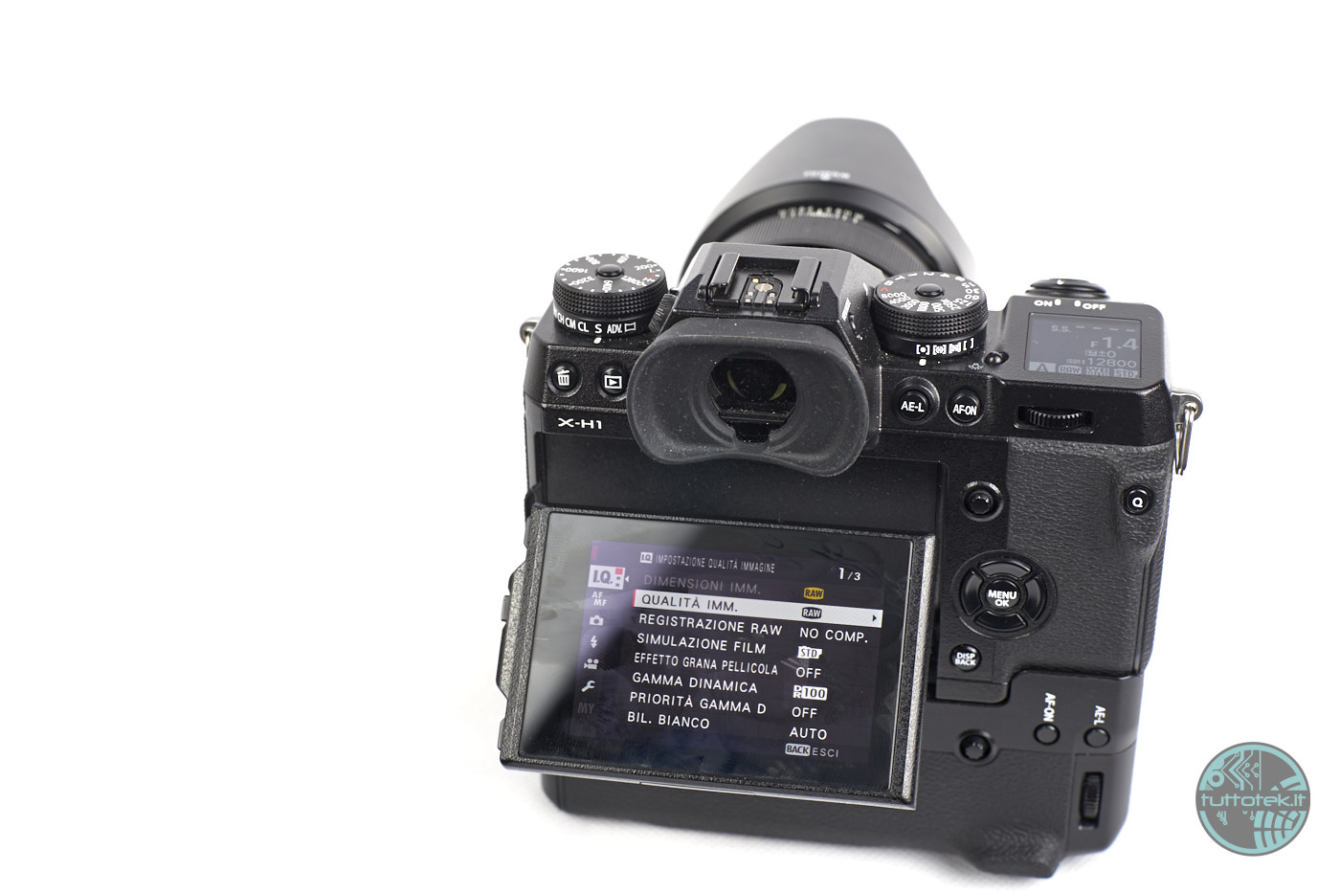
Fujifilm X-H1 is a camera resistant to dust, humidity and low temperatures. All with a body that, as initially highlighted, is more comfortable than the X-T2 and X-T3 models from every point of view. Very comfortable the arrangement of the rings in full Fujifilm style. In addition to the display, there are 4 rings on the top. The two upper ones are used to manage times and ISO and can be locked and unlocked if necessary. The lower dials, on the other hand, are used to manage the type of exposure area and to manage the camera modes. We found these ferrules extremely comfortable and above all made in the right place: right where we always wanted to find them. If this is not enough, then two more are available classic type ring nuts that allow you to choose the other parameters according to how you will set up the machine.
This joins the choice of apertures on the objectives, making the system very quick and functional to use. If this is not enough, the two dials just mentioned, if pressed, act as an extra button that can also be customized with the function that best suits you. Always along these lines we point out the possibility of illuminating the shoulder display: really useful on many occasions. On this display it is possible to read practically all the options we could ever need during a photo session. Continuing to talk about controls, we can see how the rear part is actually very classic and for this very reason extremely functional. All commands are right where we would expect to find them. The grip is just perfect: one of the best ever. The joystick, present both on the body and on the grip, is simply comfortable in every situation: regardless of how you handle the camera you will find it in the right place.
Frontally we have the focus mode switch, with a PC Sync port for studio flashes and a customizable button that we have assigned to manage the stabilizer. In addition to these buttons and ports, the auxiliary focus light and the optical release button are also present on the front. On the right side there are two SD Slots (and obviously we can choose what to save in the cards directly from the menu), while on the left side there are several ports. On the left side, without grip, we have a USB 3.0 port, micro HDMI type B port, Jack for the microphone and Jack for remote shooting. By adding the grip (which we strongly recommend you to buy directly with the camera) we will also have a headphone output and a connector for the mains power supply (excellent for use in the studio). Inside the grip there are two more batteries for one total of 3 batteries: Sufficient for very long shooting sessions for a total of about 1000-1200 shots. In addition to this, the grip manages to enable a boost mode that accelerates the continuous shooting time for speed, frame rate, improving the response time of the camera and minimizing the minimum blackout time: really not bad.
Noteworthy is the great quality of the shutter button which, on Fujifilm X-H1 is really at the top. The camera is clearly optimized for use with AF-ON, and in fact by splitting focus from actual shutter we are able to carry out the bursts in an extremely comfortable way. Very useful the connection via Bluetooth and Wi-Fi Direct which allows the camera to connect to the phone and be managed by it as well as quickly sending photos to the smartphone. In summary, the Fujifilm X-H1 camera body is truly top of the class and convinces in every respect.
The stabilizer | Fujifilm X-H1 review
Absolute novelty of this camera in the Fujifilm X series, the stabilizer is applied directly on the sensor. The sensor we remind you to be a 24,3 megapixel X-Trans CMOS Sensor III without low pass filter coupled with the image processor X-Processor Pro. The integrated image stabilization (IBIS) applied on the sensor works on 5 axes ensuring a constant correction of roll, pitch, yaw, horizontal displacement, vertical displacement. All this works in combination with accelerometers and gyros. This system guarantees according to the house one stabilization of 5.5 stops. We were able to verify in the field that these conditions are actually met. The blur in the photos is never the fault of X-H1 as much as the subject’s movements in the case of insufficient time to freeze the same.
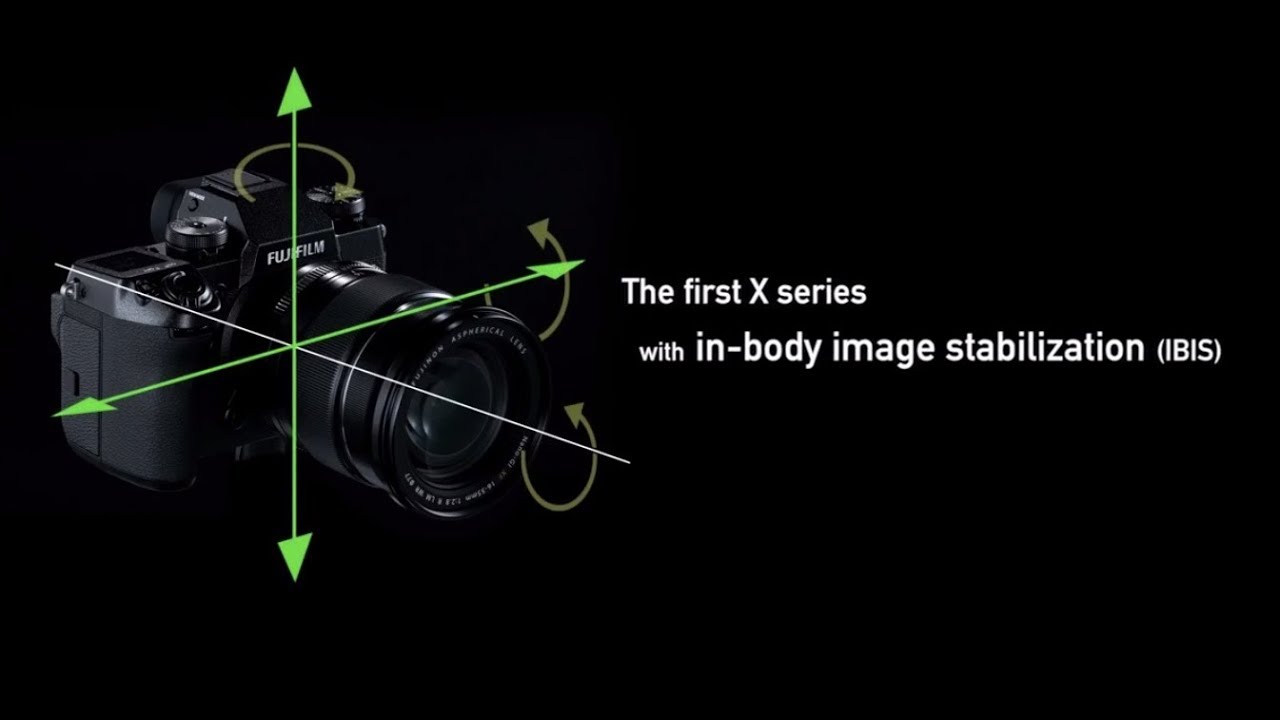
Focus and shutter system | Fujifilm X-H1 review
The autofocus aboard the X-H1 turns out to be one improved version of what was seen on X-T2. We have 325 focusing points which, thanks to the evolution of the management software and the enhancement of the processor that manages the focus, turn out to be very fast and precise. This camera works well in AF-S, but manages to be at its best in AF-C. In this mode we will have 5 pre-configured presets and a customizable profile. The parameters on which these presets are based are 3:
- sensitivity: changes the sensitivity of the camera to monitoring and / or locking with respect to a subject
- tracking speed: establishes the sensitivity to accelerations and decelerations of the subject
- AF area change: Determines whether the system should track or ignore subjects moving out of focus area
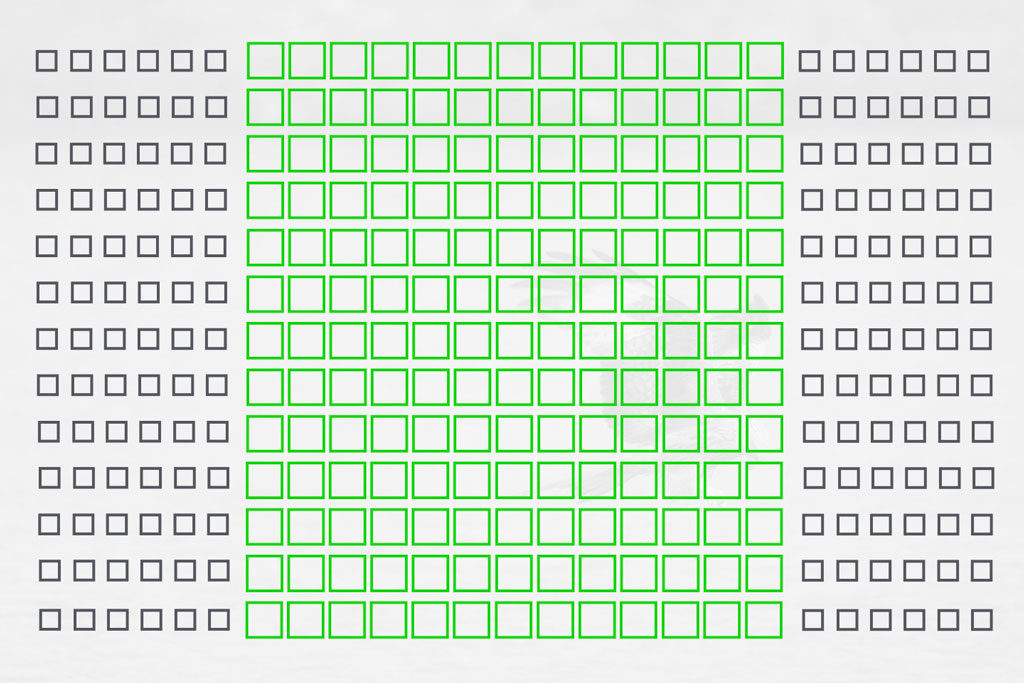
Focus Area Coverage X-H1
This focusing system, very efficient on paper, turns out very handsome even in real use after becoming familiar with the same. Another interesting feature of this camera is certainly the presence of the mechanical and electronic double shutter. The operating modes are different, we summarize them below:
- Mechanical shutter
- Electronic shutter
- Electronically controlled first curtain
- Mechanical + electronic shutter
- Mechanical shutter + Electronically controlled first curtain
The mode we recommend you use is “Mechanical + electronic shutter” in order to use the mechanical shutter for the “longer” times and the electronic shutter for the shorter times than 1/8000 and thus have all the advantages in terms of functionality offered.
Video Features | Fujifilm X-H1 review
Fujifilm X-H1 is the first X series camera to have a very solid video part that does not fear the competition in anything. Before starting let’s see the camera video specifications:
- 4K Cinema (4096×2160) 24/23,98p – 50/100/200Mbps
- 4K (3840 × 2160) 29.97 / 25/24 / 23.98p – 50/100 / 200Mbps
- Full HD Cinema (2048×1080) 59.94/50/29.97/25/24/23.98p – 50/100Mbps
- Full HD (1920×1080) 59.94/50/29.97/25/24/23.98p – 50/100Mbps
- Full HD (1920×1080) High Speed Recording (2x, 4x, 5x) 120/100p – 200Mbps
- HD (1280×720) 59.94/50/29.97/25/24/23.98p – 50Mbps
- F-Log can be recorded on the SD card
- Dynamic range up to 400% (approx. 12 f-stops)
- Face Detection also available for 4K video
- High quality microphone (24 bit / 48 kHz)
This video sector is then accompanied by the ETERNA film simulation (gorgeous in the videos). This particular simulation, expressly designed for videos, returns an extremely workable file and was our favorite choice in the test we carried out. The stabilizer in videos manages to do its job well but obviously does not reach the effectiveness that an external stabilizer can offer. However, it is extremely comfortable on many occasions. The F-log file, on the other hand, is suitable for shots that require the maximum in terms of dynamic range. We will record an extremely flat file which can then be a valid basis for any type of post production.
In the past few days we have published a …






